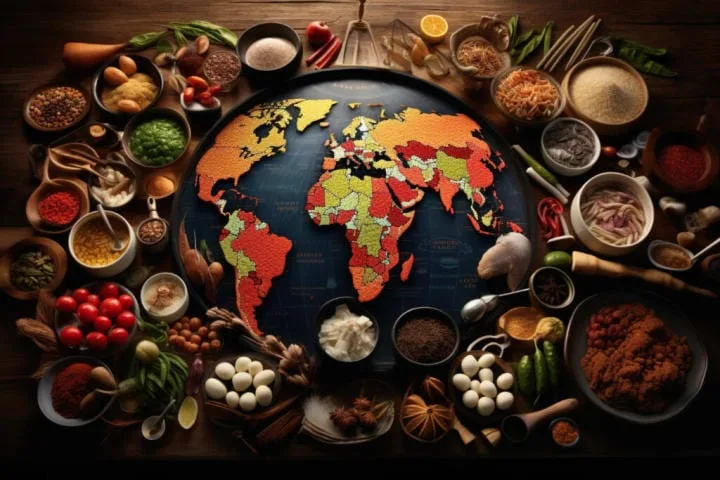How Food Tourism Transforms Your Journey into a Cultural Feast

Discover how exploring local dishes, markets, cooking classes, and food tours turns every trip into a deep dive into culture and history.
food tourism, culinary travel, local cuisine, food tours, gastronomic experiences, food culture
Introduction
Imagine the first bite of fresh pasta in Rome, the sizzling aroma of shawarma in Amman, or the warmth of Moroccan mint tea in a family-run riad. Food isn’t just a meal when you travel — it becomes the language that connects you to a place’s soul. Let’s explore why food tourism is more than just eating: it’s about history, people, and shared moments.
Beyond Restaurants: Discovering the Heartbeat of a Place
Food travelers rarely stick to fancy restaurants. They walk through bustling markets at dawn, sit on plastic stools at hidden alley stalls, or join families in home kitchens. Markets like Barcelona’s Boqueria or Istanbul’s Spice Bazaar become living museums where every spice and smell has a story.
Cooking Classes: Learning, Not Just Tasting
Taking a cooking class transforms you from observer to participant. In Chiang Mai, travelers grind curry paste by hand. In Tuscany, visitors knead dough for fresh ravioli. It’s about skill, yes — but also laughter, flour-covered hands, and new friendships.
Farm and Vineyard Visits: From Soil to Table
Food tourism often starts before the plate. Walking among grapevines in Bordeaux or tea plantations in Sri Lanka helps travelers see how geography and climate shape flavor.
Street Food: The People’s Table
Some of the world’s best food is served on streets: Vietnamese bánh mì, Mexican tacos al pastor, Egyptian koshari. It’s quick, cheap, and rooted in local life.
Famous Food Cities Worth Exploring
-
Lyon, France: For bouchons and charcuterie.
-
Bangkok, Thailand: Floating markets and night stalls.
-
Marrakech, Morocco: Jemaa el-Fnaa square after sunset.
-
New Orleans, USA: Gumbo, beignets, and jazz.
Sustainable Choices in Food Tourism
Eating locally reduces food miles and supports farmers. Choosing small, family-run restaurants over global chains keeps money in the community.
Food Festivals: Celebrating Culture Together
From Spain’s La Tomatina to Japan’s Sapporo Snow Festival (with street food galore), festivals blend tradition, food, and fun.
Why Taste is Memory
Years later, travelers often forget museum facts but remember the taste of fresh olives in Greece or sweet mangoes in Manila. Taste locks memories deeper.
Challenges: Ethical and Health Concerns
Tourists must consider over-tourism in famous food spots, cultural respect, and dietary health — balancing curiosity with caution.
Tips for Food Travelers
-
Learn “thank you” in the local language.
-
Try something new each day.
-
Ask locals, not just TripAdvisor.
-
Go during lunch when markets are busiest.
The Role of Technology
Apps like Eatwith let travelers book dinners in locals’ homes. Instagram helps find pop-up food spots. But spontaneity still matters.
FAQs
Q: Is food tourism expensive?
A: It can be budget-friendly; street food and markets often cost less than tourist restaurants.
Q: What if I’m vegetarian?
A: Research helps; many cultures have rich vegetarian traditions.
Q: Why is food so important in culture?
A: Food carries history, family traditions, and local identity.
Conclusion
Food is more than a photo on Instagram. It’s a story told in flavors, textures, and shared tables. Through food tourism, every journey becomes a feast — not just for the body, but for the soul.




